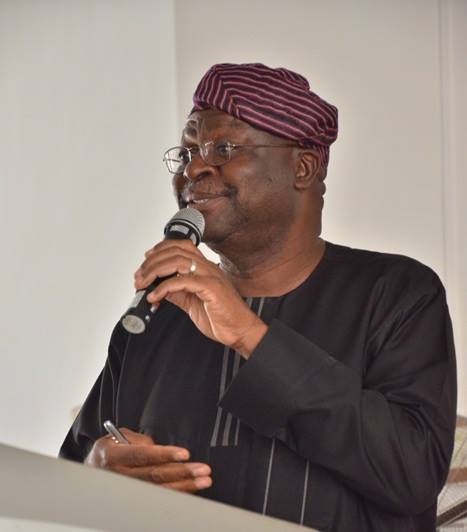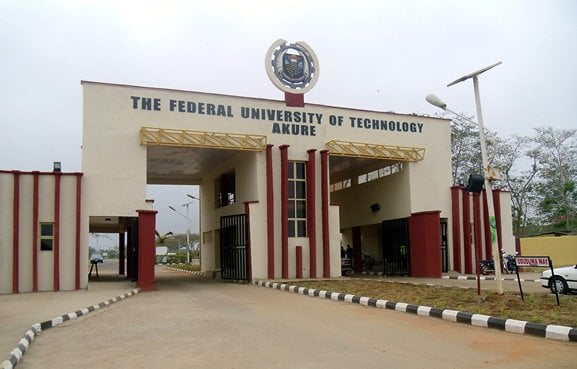
THIRTY-SIX REASONS WHY ABULECENTRISM WILL TAKE NIGERIA OUT OF POLITICAL, ECONOMIC AND SOCIAL LOGJAMS.
Professor Olurinde Lafe
Abulecentrism , the rapid development of the society catalyzed at the community level, advocates local approach to governance, project execution and service provision. With the boisterous and rising clamor for self-determination and regional autonomy, abulecentrism offers Nigeria a solid path to preserving our federalism while honouring the nation’s rich ethnic diversity and the dire need for accelerated development.
Below are the thirty-six reasons why Nigeria should embrace abulecentrism.
1. Practicing True Federalism. The practice of true federalism is fulfilled in abulecentrism as every citizen (regardless of the state of origin, local government, or clan) can participate in the development of the larger society by being actively involved at the local community level.
2. Modular Operational Units. Abulecentrism is built on the central concept of small modular units, such as “abule” (a village in Yoruba language), serving as the primary building block for developing the greater society. In abulecentrism, the “abule” is a metaphor for the smallest sustainable unit of development for the society. That unit, for example, may be a community of a few hundred homes. In some other communities, the smallest sustainable unit will be a municipality of thousands of homes.
3. Decentralized Governance: Abulecentrism shifts the handling and management of key issues affecting the welfare of the citizenry to the local communities. The central government has the sole responsibility of protecting the nation’s borders (external security), conducting international diplomacy, issuing international passports, setting, and enforcing policies on currency and international trade, executing treaties, and overseeing the implementation of concessionary capital-intensive infrastructural projects (e.g., construction of regional/interstate highways and rail lines).
4. Private-Sector Led Development: Development is driven from the local communities with the private sector serving as the main implementation engine. Government focuses on governance. Business remains the domain of the business sector. Citizens, at different socio-economic levels, play active roles in developing their local communities. The country moves away from humongous, unwieldy public-funded projects that breed corruption, cronyism, unaccountability, and impunity.
5. Natural/Organic Growth: Abulecentrism is built on the same fundamental principle governing the efficient and effective operations of natural processes and organizations (e.g., biological cells, ant colonies, animal, and human societies, etc.). Activities initiated at the micro level combine organically and emerge to produce functions at the macro level. Systems in biology, chemistry, engineering, politics, economics, and physical/operational/conceptual processes exhibit abulecentrism by producing robust emergent behavior emanating from smaller tasks performed at the lowest level.
6. Local Gains, National Advancement: The average citizen experiences the direct impact of projects and services rendered in the local community. There is no “National Cake” to be stolen or shared. Abulecentrism produces “Local Cakes”. The wealth of the nation, in all its different forms, is obviously domiciled in the different local communities. Efforts are concentrated in effectively harnessing the natural resources and applying the proceeds to benefit the local communities.
7. Responsible Consumption: Abulecentrism prevents unequitable and irresponsible consumption of the nation’s resources at the centre without regard to the needs of the larger society. Instead of eagerly waiting for subventions from Abuja every month, local communities are the frontline beneficiaries of the proceeds of the resources.
8. Strength in Diversity: Given the nation’s more than 500 ethnic groups, abulecentrism treats this diversity as an asset, not a liability. Individual groups have the pride-of-place and economic incentives to develop their own local community. The selfish urge to lavish and preserve Federal favors for your own “tribesman” is turned on its head. The push is for citizens to join hands in developing the local communities while honoring the rules underpinning the federal structure.
9. Energizing the Local Government Areas: The 774 LGAs, serving a population of over 180 million, provide an excellent vehicle for abulecentric development of the nation. Development is enhanced the closer the average citizen can experience the impact of government, projects, and services. The United States of America, from whom we copied our presidential system of government, has 3,144 counties (equivalent to our LGAs) for a population of 326 million. The typical county in the USA serves an average of 104,000 Americans. By contrast, about 233,000 Nigerians are served per LGA. Therefore, the average American experiences a greater impact of the local government than the average Nigerian.
10. Blocking Institutional Corruption: Abulecentrism provides a powerful antidote to rampant and endemic institutional corruption. Development is shifted from the Federal Capital to local communities where leaders will be more readily held to account for their actions on the way resources are being used. Fingers that are normally pointed at Abuja will now be pointed at operators at the community level.
11. Breaking Problems Down: The granular development approach in abulecentrism allows societal problems (e.g., power supply, transportation infrastructure, healthcare, agriculture, education, etc.) to be broken down into smaller problems that are better managed and much easier to solve at the community level.
12. Organic Bottom-Up Development Approach: Development is initiated, executed, operated, and managed at the local community level. Organic development growth model is achieved by scaling from the local communities to the larger society. Abulecentric development is “bottom-up” not “top-down”.
13. Purposeful Project Development: Essential projects (e.g., construction of power plants, communications networks, refinery, etc.) are executed as the means of actualizing meaningful socio-economic development of the local community.
14. Local Stakeholders: Private companies, with equity control by stakeholders drawn from within the local community, are established as the vehicle for executing projects and providing essential services. There is an economic incentive to perform.
15. Proximity of Installations: Core systems and installations (e.g., power plants) are built close to where they are being used. Situations where plants serving the local community are installed at thousands of kilometers away are avoided like a plague in abulecentrism. The risk of frequent system failure is minimized. Locals also have a personal stake in guarding and protecting installations providing critical services to the community.
16. Use of Local Materials: Maximal use is made of local materials for manufacturing, buildings, road infrastructure, etc.
17. Maintenance: Maintenance culture is aggressively promoted in abulecentrism to ensure the proper functioning and longevity of equipment and installations.
18. Ending Wasteful Expenditure: Huge resources being expended to run the current central federal government system will shrink dramatically. Law makers and civil servants holed up in Abuja will see the wisdom and economic benefit in participating and being stakeholders in the development of their respective local communities.
19. Taxes/No Subventions: In abulecentrism local communities have control over their natural resources. The Federal/State Government will receive taxes from earnings and internally generated revenues from the local communities.
20. Solving the National Power Problem: Abulecentrism provides the fastest and most sustainable way to solve the Nigerian electrical power problem. The current power network architecture needs to be completely revamped. The solution is a web of micro-grid power networks customized to the needs of each community. The new system will be based on distributed power generation using locally available energy sources such as natural gas, biofuel, solar, wind, hydro etc. Modern utility-scale energy storage equipment will resolve intermittency issues. The distributed generation approach will solve the single-point-of-failure challenges common with the current system.
21. Meeting Acute Housing Shortage: Nigerian currently needs 18 million new housing units. If there is a national will and commitment to meet these housing needs, with a mandate to incorporate 10KW of photovoltaic power into every new housing construction, a total of 180,000MW of clean uninterruptible electricity will be produced for the entire country. The national power problem will be solved and our housing needs will be met. The sweetener is that government does not have to pay for this bold vision. People need homes. People need electricity. The marketplace will take care of the funding. Government only needs to be an enabler and a facilitator.
22. Pervasive Community Communications Networks: Nigeria has done well in privatizing the telecom sector and embracing cellular telephony. The country can do much better. There is an opportunity to have thousands of entrepreneurs operating wireless Hot Spots spread around the LGAs. The ownership and operation of these Hot Spots will give entrepreneurial residents enormous business opportunities in the vibrant ICT sector. These entrepreneurs will be customers of the existing big providers in the sector who continue to own and operate the backbone of the network.
23. Empowering Small Players: Small and Medium Enterprises (SMEs) are empowered in abulecentrism. These SMEs will enter concessionary deals to “Finance, Build and Operate” plants/infrastructure (e.g., power plants, water works, roads, buildings etc.) in the local communities. Stakeholders, small and big players, drawn from within and outside the community, will raise the funds required for specific projects and services.
24. Sustainable Agriculture: In abulecentrism, the individual farmers are strong players in Community Agro-Business Enterprises (CABE) which are owned and operated by local entrepreneurs, investors, and farmers. Members of the community (particularly the youth), after receiving proper training in marketing and business management, serve as the key operators of CABE. These constitute the primary conduit of information flow to the farmers. They organize farming educational classes. CABE purchases produce directly from the farmers. CABE, which has food processing capability, will sell raw produce and processed food to the larger market.
25. Policing – Internal Security: In abulecentrism, internal security is the primary responsibility of the state and local government. Community policing, which has been effective in different communities around the world plays a key role in providing internal security.
26. Adoption of Renewable Energy: Abulecentrism promotes the use of renewable energy sources (e.g., solar, wind, small hydro, biofuel, etc.). Solar energy is ubiquitous across the nation. For example, if we cover 1/4000th of Nigeria’s land space with current off-the-shelf solar panels, we will generate all the electricity the country needs. That includes electricity to power all our homes, offices, schools, hospitals, cities, and industries.
27. Cost Effective Energy Use: Abulecentrism advocates tapping fuel sources from communities that are near where the energy will be used. This greatly reduces the scale of the supporting transmission and distribution network. Capital costs are thereby lowered and maintenance rigor is reduced.
28. Viable Sports Sector: To grow the sports sector, talented athletes in the local communities must be identified. Local clubs and facilities are set up and participation in competitive sports will be aggressively promoted in the local schools. Each community will commit as much resources as it can afford. Competition among local sports teams, will produce state champions from which regional and national champions will emerge.
29. Creative Financing of Development Projects: Abulecentrism provides a more effective and sustainable approach to financing development projects. Consider, for example, the funding challenges being experienced in the power sector. Nigeria has been going around the world’s financial capitals, cap-in-hand, looking for US$5Billion annual investment for the power sector. However, Nigerian mobile phone users spend over US$1Billion monthly on voice calls. That is more than US$12Billion annually! Therefore, prudence dictates that the answer to the power funding question could very well be with the Nigerian public. Given the right investment framework, the average Nigerian will be a “micro-investor” in services and projects in their local communities.
30. Eliminating Youth Unemployment: Abulecentrism solves the chronic youth unemployment that has bedeviled the nation. Sixty-two percent of the Nigerian population is under 25 years old. The unemployment rate among the working age (15-35) is over 50%. By shifting capacity development and projects to the local communities and allowing the private sector to be chief drivers of services and developmental projects, every young person is given an unusual opportunity to be gainfully employed. CREATING JOBS IN THE LOCAL COMMUNITIES WILL REVERSE MASS MIGRATION INTO URBAN CENTRES.
31. Improving Air Transportation: Small regional airports and aerodromes are promoted in abulecentrism. The building of these facilities should be concessionary arrangements supervised by the appropriate local, state, or central government agencies. Small regional aircrafts will be operated by private companies to shuttle people and goods. Occasionally, government will have to subsidize air travel in unprofitable routes to guarantee the uninterrupted operation of the small regional airline companies. One subsidy formula that has been used successfully in several countries involves the government guaranteeing the payment of a minimum number of seats on specific flight schedules on specific days of the week. The government takes on the responsibility to pay the airline for the number of seats short of the minimum guaranteed. This approach provides a sense of continuity and it is an efficient way to strengthen the growth of air transportation to/from economically disadvantaged communities.
32. Adequate Water Supply: The goal is to harness water sources (e.g., groundwater and surface water from rivers, ponds, lakes, and the ocean) closest to the ultimate users. An abulecentric water supply system incorporates a “micro reticulation system” or local network of pipes that will deliver the water to the homes, buildings, and other locations where it will be used. When factored into the overall water supply system such a micro reticulation system greatly alleviates the daily suffering the people (mainly poor women and children) go through in many communities around the world trying to get portable water.
33. Training & Capacity Development: The acquisition of the requisite skills by workers for community-specific projects is critical to the success of an abulecentric development initiative. Training must cover all the areas critical to accelerated development. These include energy systems, software engineering, communications, modern transportation, road construction, building construction, water supply, waste and solid waste management, agro-business, business management, project management, etc. Training for abulecentric development will include: a) classroom-style instructions where trainees are exposed to subject area fundamentals; b) workshop and laboratory sessions where devices/equipment are built, assembled, and tested; and c) field sessions where trainees observe and participate in the construction for real life projects. Project-targeted abulecentric education will generally take place in vocational/training facilities and technical centers. Local academic institutions will continue to provide the foundational education and these will always be essential to abulecentric human capacity development
34. Rapid Industrialization: The local community must have the support base required to attract industries (e.g., manufacturing, service, light, and heavy industries) to the area. Under abulecentrism this can be achieved by building an industrial/technology park that will fully utilize both the human and raw material resources available in the community. Industrial parks can work synergistically with local educational institutions in the development of human capacity to attract important industries to the community. Most industrial parks are strategically located at the periphery of the community. This allows critical infrastructure (e.g., highways, airports, railroads, gas lines, high-voltage electrical power etc.) to be developed specifically for the technology park.
35. Effective Healthcare Delivery: The provision of good quality healthcare to all the citizens throughout the communities is a key development index anywhere in the world. Healthcare delivery vehicles (e.g., clinics, health centers, general hospitals, specialist hospitals, diagnostic centers etc.) must be properly anchored in the communities being served. Firstly, small, and manageable primary healthcare delivery centers must populate the local communities. These are the first ports of call for healthcare in the community. Secondly, intelligent planning and smart health policy implementation must be pervasive throughout the healthcare delivery system. Consistent health promotion (e.g., counseling on diet, nutrition, weight reduction, stress management), health awareness programs, disease surveillance, pollution-free living, etc. must all be integrated into the activities of the community-based health centers which will be operated by teams of doctors, nurse practitioners, physician assistants, pharmacists, dietitians, and other trained healthcare personnel. In the ultimate abulecentric healthcare delivery, a certified health centre should be within easy reach of every resident of the local community. Healthcare facilities should be within a walking distance from anywhere in Nigeria. Local ownership creates economic incentive for the widespread growth of the health centers. The network of health centers can cooperate to form clusters to derive economy-of-scale benefit in the purchase of drugs and sharing of resources (e.g., hard-to-find expertise in specialized fields).
36. Modular/Micro Refineries: Modular/Micro refineries can produce up to 30,000 barrels of fuel per day. Modern refineries using locally available feedstock (e.g., petroleum, biomass, municipal waste) will allow fuel to be produced at local communities around the nation. This is in line with the tenets of abulecentrism.
Final Word
Those are the Thirty-Six reasons why Nigeria should embrace abulecentrism. Ironically, one for every state in the federation. Nigeria is a Federal Republic. Unfortunately, but our own style of federalism is bloated, inefficient, ineffective, corruption-prone, and has failed to meet the essential needs of the citizenry. We must look for a better way of utilizing the nation’s enormous human, mineral and natural resources. Abulecentrism offers a seamless way forward.
Lafe a Professor of Civil and Environmental Engineering is the current Director of the Centre for Renewable Energy Technology, CRET, of the Federal University of Technology Akure, FUTA.



